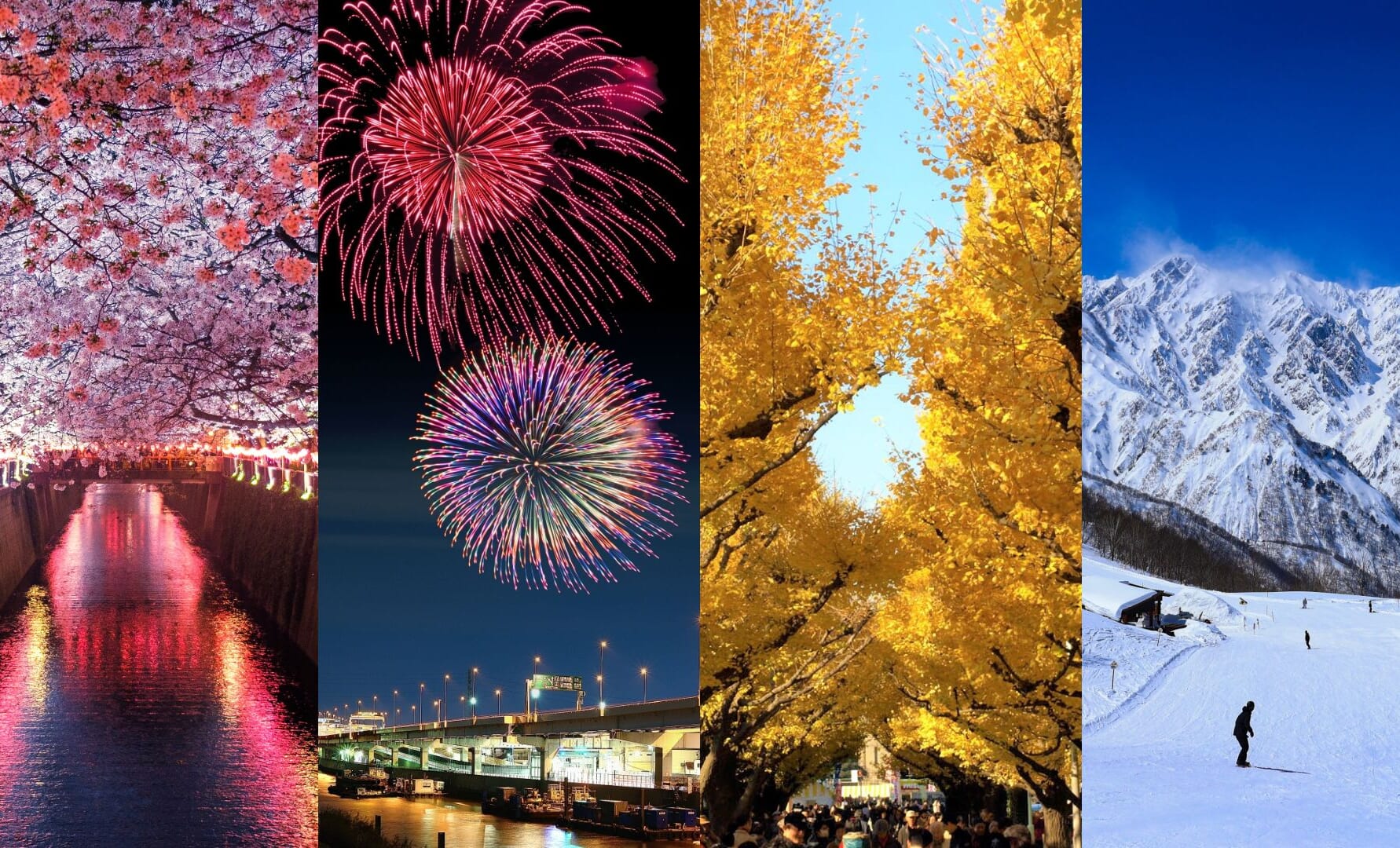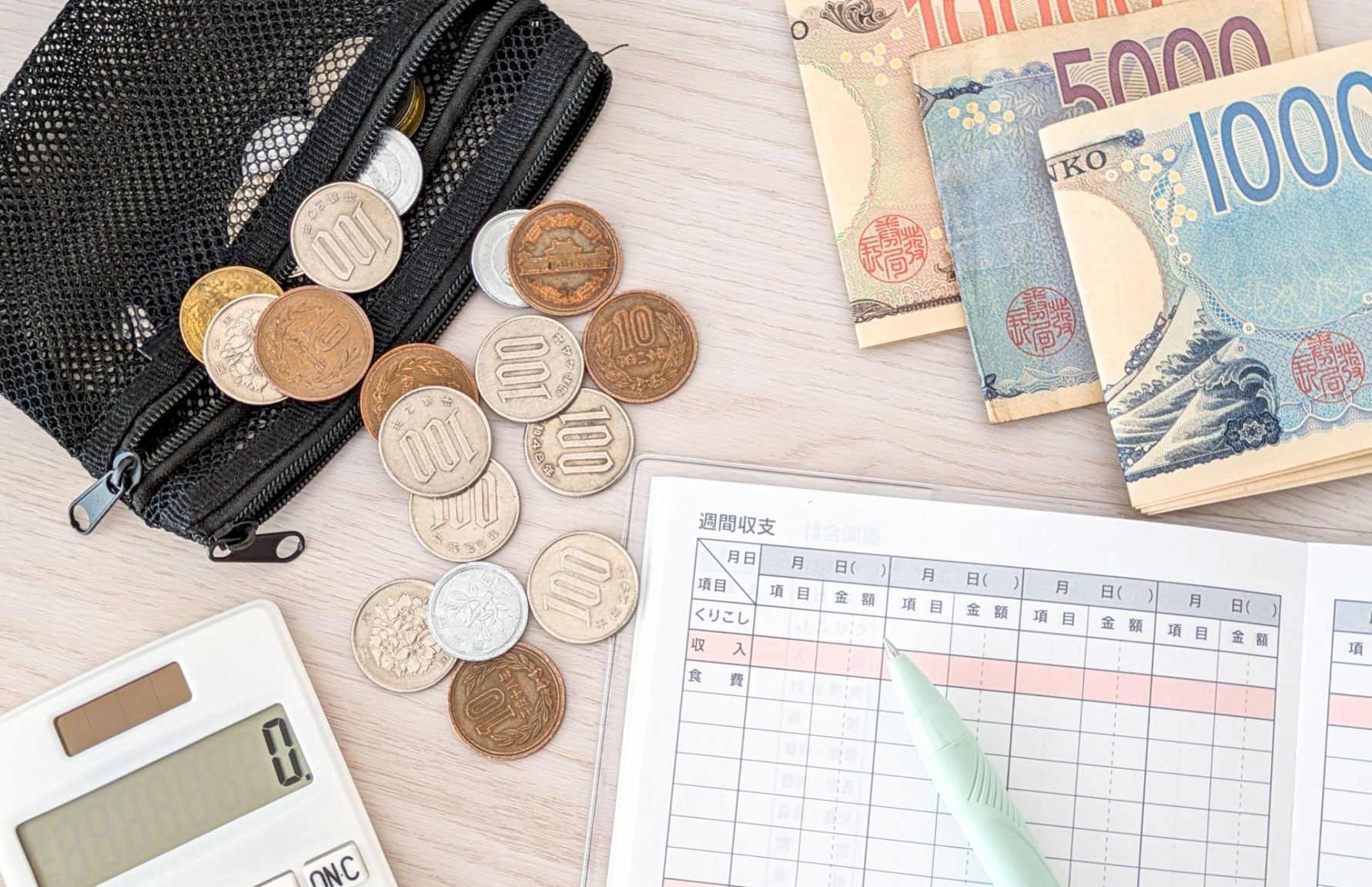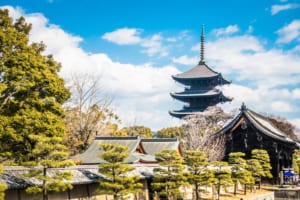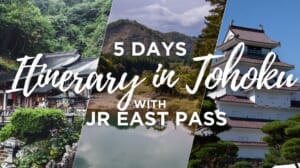1 Month Itinerary in Japan
30 Days in Japan: Best 1-Month Itinerary Plan

A full month in Japan opens the door to a more thoughtful kind of travel, one that goes beyond checking boxes and rushing between icons. With time on your side, it’s possible to move at a more natural pace, exploring not just the well-known highlights but also the regional contrasts that define the country. Keeping a balance between dense urban centers, quieter coastal towns and rural stretches, this itinerary is designed for travelers who want to see Japan in depth, appreciate its variety, and take advantage of the freedom that only a longer trip can truly offer.
*Please note that this article contains affiliate links.
If you’re looking for convenient and competitive eSIM options during your trip, check our article .
<<Book your JR Pass for Whole Japan here!>>
What Makes This 1 Month Japan Itinerary Special
Time. Plenty of time. More than twice the average Western visitor, typically ranging from 10 to 14 days, according to 2024 statistics. Certainly, two weeks is enough to cover the country’s main highlights, but the extra time allows us to mix a wider range of locations, deepening the cultural experience beyond just being able to visit more places. As obvious as it sounds, Japan is more than Tokyo/Osaka/Kyoto. And extending your visit to lesser-known areas with very distinct cultural traits such as Chugoku or Kyushu, or Tohoku (which is not included in this itinerary as we can’t have everything but by all means, please consider it if you can) is a valuable window to gain a more nuanced view of the country. Hokkaido is another excellent choice to add variety and stunning landscapes to your trip.
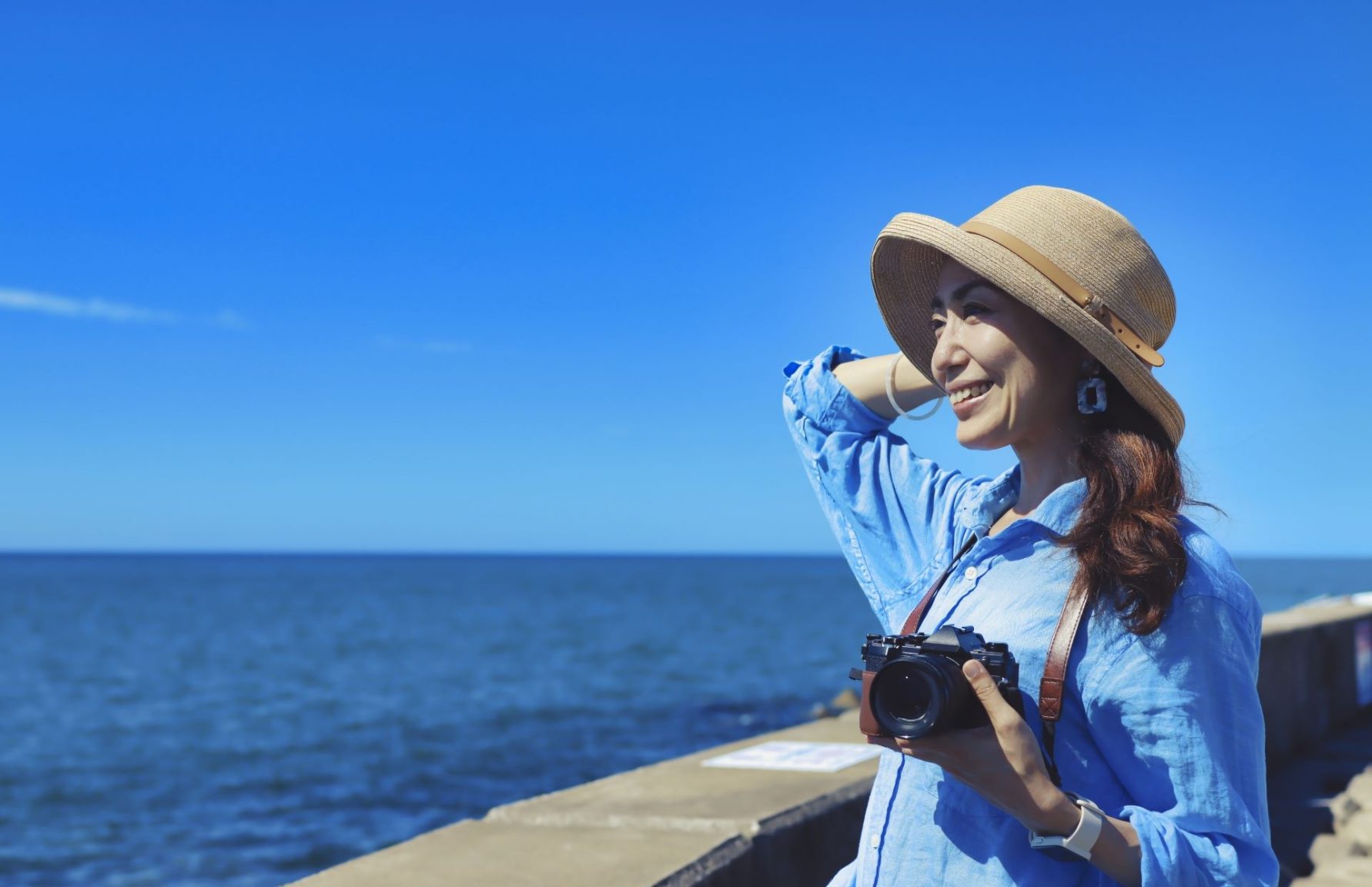
With first-time visitors in mind, or those who may have visited the usual spots once and just needed a deeper dive, this itinerary is designed to balance Japan’s most celebrated sights with lesser‑known gems, to make sure you can experience a little bit of everything: urban buzz, cultural depth, and awesome landscapes. Each section zeroes in on a different theme: the first part dives into Tokyo’s varied neighborhoods and nearby 1-day trips; the second takes you to the historic heartland of Kansai; the third moves west through Chugoku’s castle towns and island shrines; and the final week explores the southernmost area of Kyushu’s cities, volcanoes, and hot springs.
On a broad level, the route traces a westward arc, starting in Tokyo, winding through Kyoto, Osaka, Okayama, Hiroshima, Onomichi and the Shimanami Kaido, then jumping to Fukuoka to explore northern Kyushu before circling back for departure from Fukuoka to avoid the hassle of returning to Tokyo. I had to sacrifice Tohoku to ensure this more-or-less linear progression minimizes backtracking while at the same time giving you enough information to adapt this itinerary to suit your needs.
Part 1: Kanto Area Essentials
Days 1-5: Exploring Tokyo’s Neighborhoods

Tokyo, Japan’s capital, seamlessly integrates ultramodern skyscrapers with historic temples. Five days should be enough to cover all the essentials, so instead of providing a detailed plan, you’ll find here a wealth of resources to see everything at your own pace. Take your time to walk around and feel the pulse of one of the most dynamic cities in the world and a gateway to Japan’s rich culture.
Check more itinerary ideas for Tokyo:
Tokyo 3 Days Itinerary for First Timer
3 Days Itinerary: Tokyo on a Budget
Some areas and locations you definitely cannot miss:
- Shibuya and Shinjuku: Experience the iconic Shibuya Crossing and the vibrant nightlife of Shinjuku. These districts are hubs of shopping, entertainment, and plenty of culinary options.
- Asakusa and Ueno: Step back in time in Asakusa with a visit to Sensoji Temple, Tokyo’s oldest Buddhist temple. Nearby, Ueno offers cultural institutions like museums and a spacious park. Akihabara’s technological and anime paradise is also just a few train stops away.
- Harajuku and Meiji Shrine: Discover the youthful fashion trends of Harajuku’s Takeshita Street, then find tranquility at the adjacent Meiji Shrine, located within a peaceful and lush forested area.
Days 6-8: Optional Day Trips from Tokyo
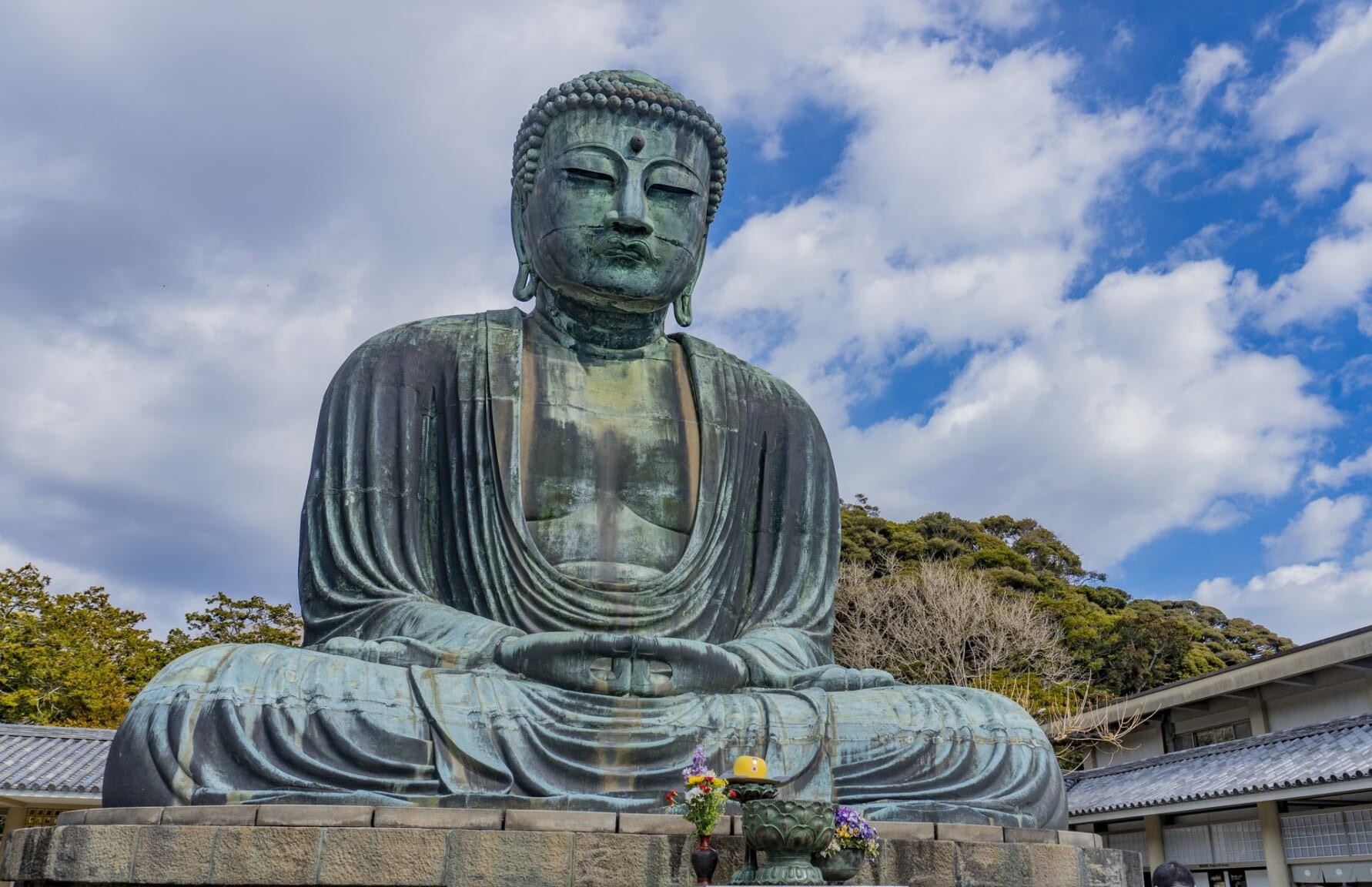
Venture beyond Tokyo’s city limits to discover the surrounding regions’ rich cultural and natural landscapes. Consider day trips to destinations like Kamakura, known for its Great Buddha statue; Hakone, offering hot springs and views of Mount Fuji; or Nikko, home to ornate shrines and scenic beauty. These excursions provide a refreshing contrast to Tokyo’s urban energy:
- Kamakura and Enoshima: Kamakura, a former capital, is rich with temples and the iconic Great Buddha statue. Nearby Enoshima Island offers coastal charm, shrines, and panoramic views from the Sea Candle lighthouse.
- Nikko: Home to the ornate Toshogu Shrine, Nikko is a UNESCO World Heritage site surrounded by natural beauty, including waterfalls and scenic bridges. Don’t miss our transportation guide: How to Get to Nikko from Tokyo.
- Hakone: Famous for its hot springs, Hakone also provides views of Mount Fuji, the Hakone Open-Air Museum, and a scenic ropeway over volcanic landscapes. Follow our indications to get there: How to Get to Hakone from Tokyo.
Continuing your journey through Japan, the next segment focuses on the cultural and historical richness of Kyoto and Nara.
Part 2: Exploring Kansai Treasures
See also: 7 days itinerary in Kansai & 10 Days Itinerary in Kansai.
Days 9-12: Kyoto, The Cultural Heart of Japan
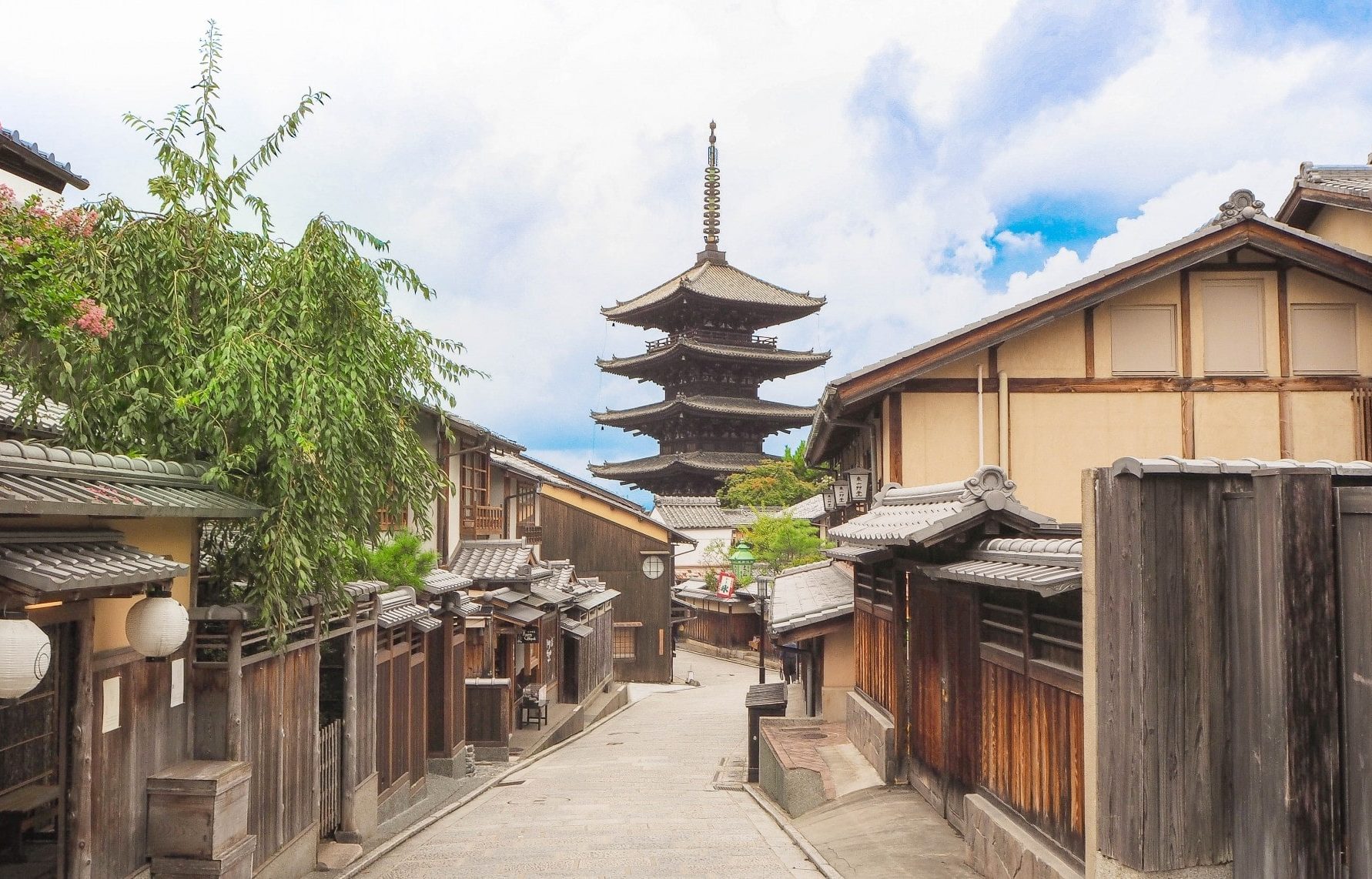
Traveling by Shinkansen, Kyoto is just 2h away from Tokyo, or about 2 hours and 40 minutes from Hakone, so you have plenty of time on your first day in Kyoto if you leave early enough.
<<Book your JR Est Kansai Area Pass here!>>
Kyoto is the old imperial capital and for many, a significant portion of the core of Japan’s cultural heritage. Allocating 4 days will allow you plenty of time to explore everything that Kyoto has to offer like ancient shrines and temples, beautiful gardens, and traditional teahouses. Wander through historic districts like Gion, where geisha culture thrives, and visit iconic sites such as Kinkaku-ji (the Golden Pavilion) and Fushimi Inari Shrine with its thousands of torii gates.
Check more itinerary ideas around Kyoto:
Some Kyoto essentials you shouldn’t miss:
- Historical Landmarks: Begin with a visit to Kiyomizudera Temple, renowned for its wooden stage offering panoramic views of Kyoto. Explore Fushimi Inari Shrine, famous for its thousands of vermilion torii gates leading through forested pathways.
- Zen Gardens and Temples: Discover the impressive Kinkakuji (Golden Pavilion), a Zen Buddhist temple adorned with gold leaf, reflecting beautifully in its surrounding pond. Stroll through the serene Ryoanji rock garden, exemplifying Zen landscaping.
- Traditional Districts: Wander the historic streets of Gion, Kyoto’s renowned geisha district, where traditional teahouses and machiya houses line the lanes. Experience the charm of Higashiyama, with its preserved architecture and artisan shops.
- Arashiyama: This is where Kyoto’s most famous bamboo forest is located, conveniently close to Tenryuji Temple, a gorgeous UNESCO Heritage site.
- Philosopher’s Path: Enjoy a leisurely walk along this picturesque canal-side path, especially beautiful during cherry blossom season.
Day 13: Nara, A Day Trip to Ancient Heritage
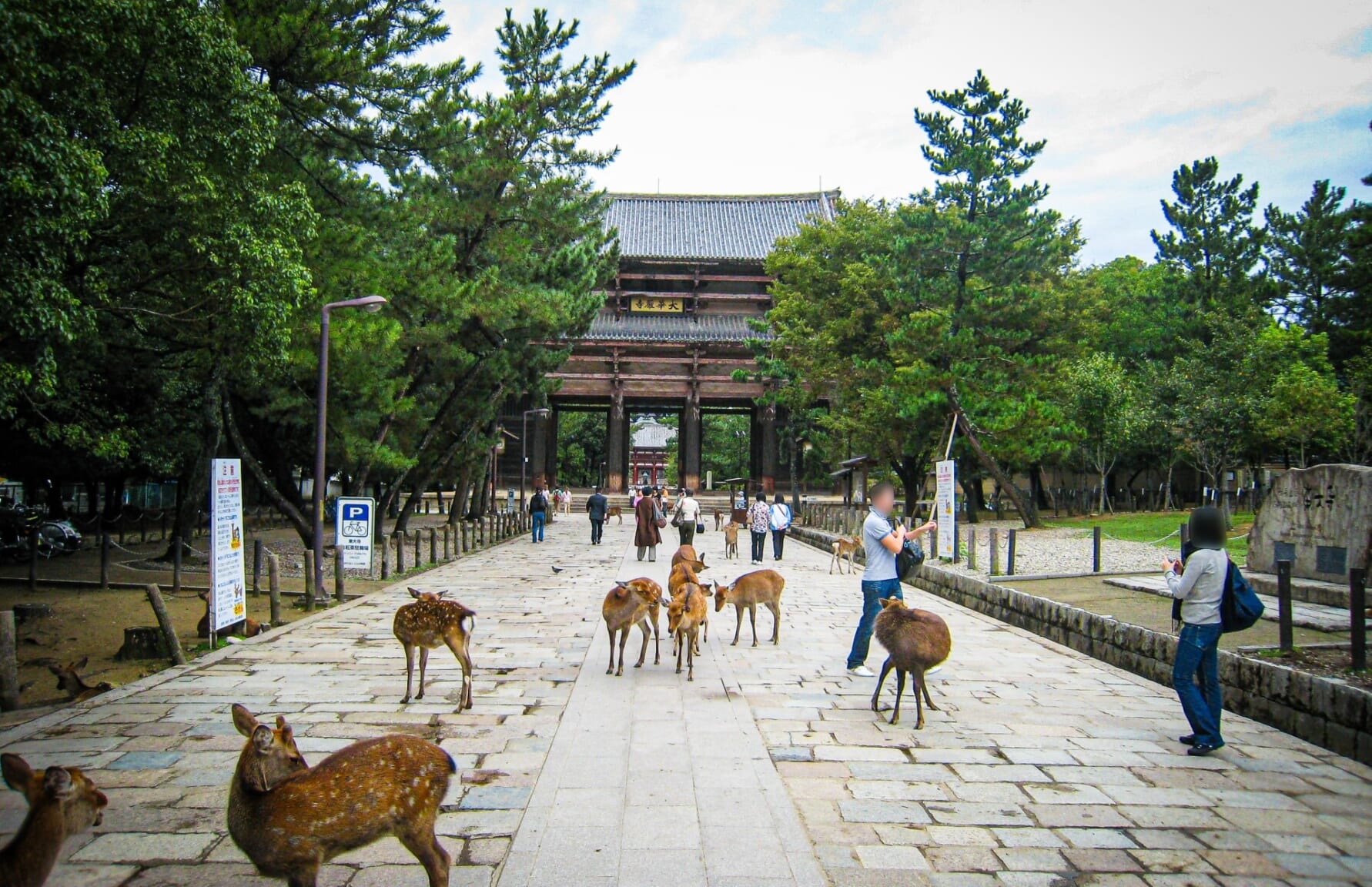
Nara, is located less than 1h train ride away from Kyoto or Osaka. You can either visit it as 1-day trip from Kyoto or Osaka or spend 1 night there if you wish. As Japan’s first permanent capital, Nara is celebrated for its ancient temples and free-roaming deer in Nara Park. The city holds some of Japan’s oldest and most significant cultural assets, reflecting its pivotal role in the nation’s early history. Its most important spots can be comfortably covered in 1 day:
- Todaiji Temple: Visit this monumental temple housing the Great Buddha, one of the largest bronze statues of Buddha in the world.
- Nara Park: Encounter the famous free-roaming deer considered to be messengers of the gods. Feeding the deer with specially purchased crackers is a popular activity.
- Kasuga Taisha Shrine: Explore this Shinto shrine known for its hundreds of bronze and stone lanterns, creating a mystical atmosphere.
- Isuien Garden: Relax in this traditional Japanese garden offering scenic views and a peaceful retreat.
Days 14-15: Osaka, Urban Exploration and Gastronomy
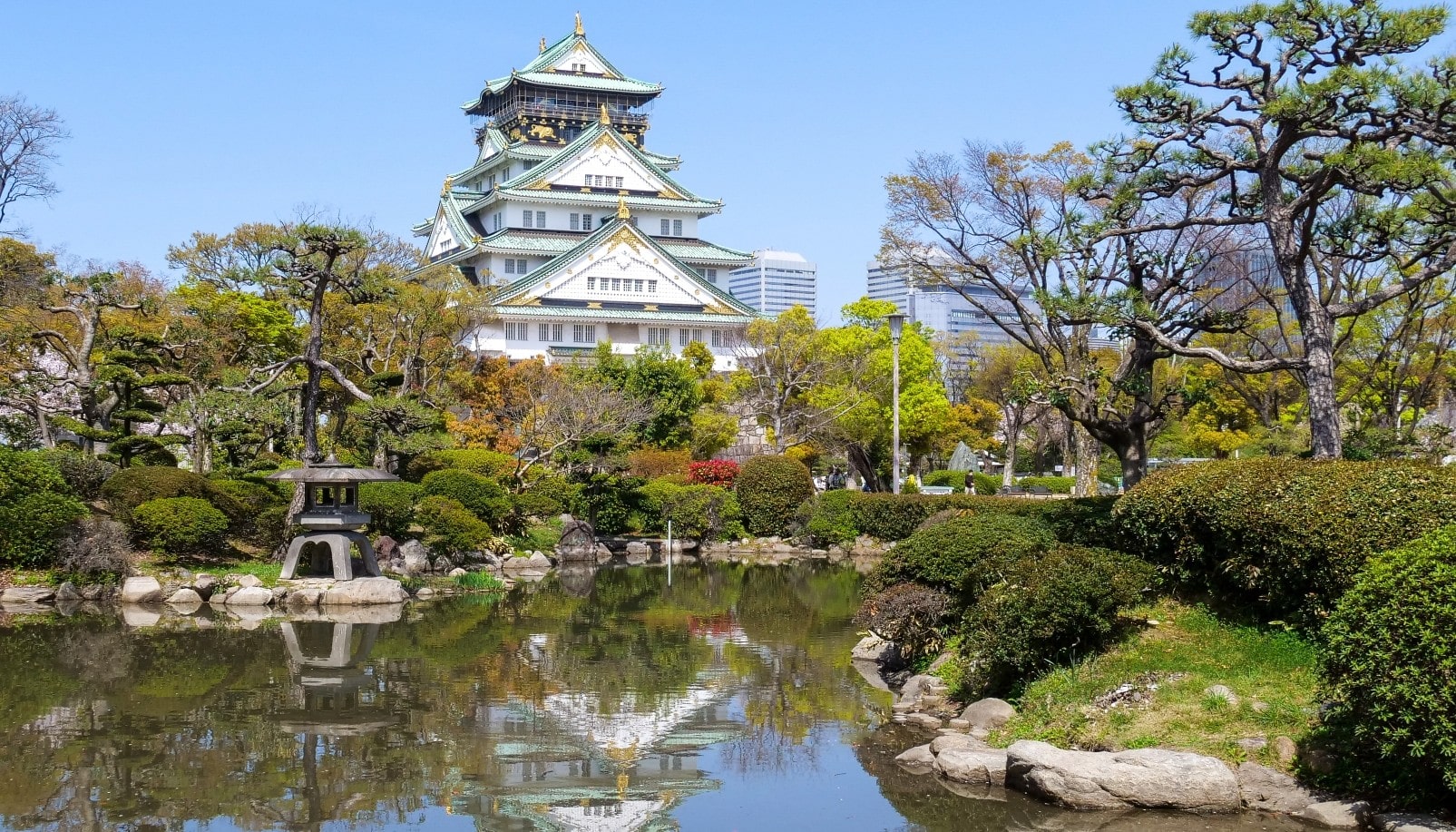
Osaka, Japan’s second largest metropolitan area, is a vibrant urban center known for its modern architecture, lively street scenes, and most importantly, its culinary delights that have earned it the nickname of Japan’s kitchen. 2 days should be enough to traverse the city’s must-visit spots. More itinerary ideas around Osaka:
Some of Osaka’s most important essentials:
- Osaka Castle: Begin your exploration with a visit to Osaka Castle, an iconic symbol of the city’s rich history. The castle’s museum offers insights into Osaka’s past, while the surrounding park provides a pleasant setting for a leisurely stroll.
- Dotonbori District: Experience the vibrant energy of Dotonbori, Osaka’s famous entertainment and dining district. Illuminated by neon lights and animated signage, this area is perfect for sampling local street foods such as takoyaki (octopus balls) and okonomiyaki (savory pancakes).
- Shinsekai Neighborhood: Explore Shinsekai, a district that blends nostalgic charm with a unique atmosphere. Here, you can try kushikatsu (deep-fried skewers) and enjoy panoramic views from the Tsutenkaku Tower.
Day 16: Himeji, A Day Trip to Japan’s Premier Castle
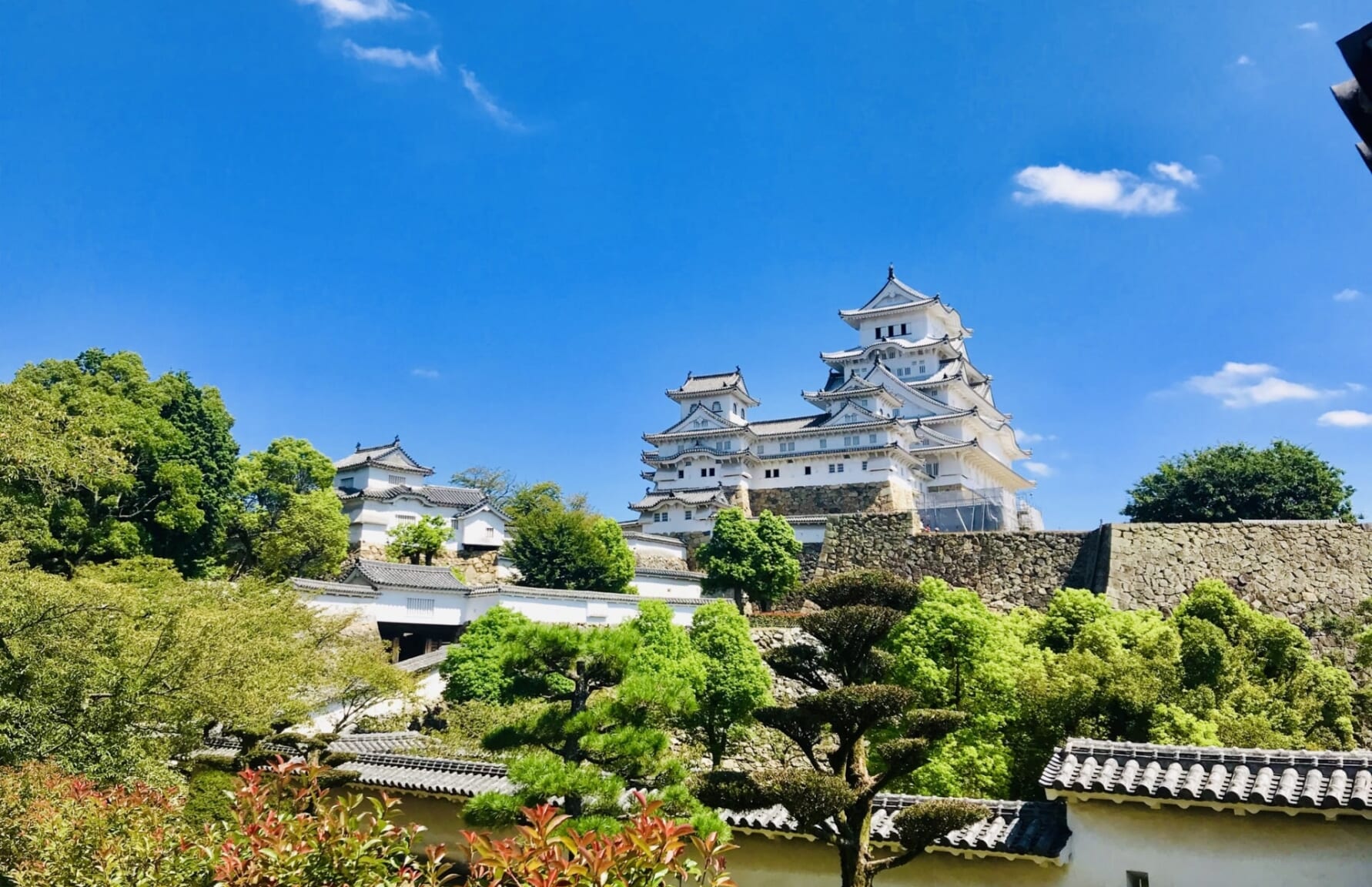
Himeji, located in Hyogo Prefecture, is accessible from Osaka via the Sanyo Shinkansen, with the journey taking approximately 30 minutes from Shin-Osaka Station. Alternatively, the Tokaido-Sanyo Line offers a direct route taking about an hour from Osaka Station.
The city is a very popular day trip destination from Osaka and is best known for Himeji Castle, Japan’s most well-preserved feudal-era castle and often referred to as the “White Heron Castle” due to its elegant white appearance. Beyond the castle, explore Koko-en Garden, a traditional Japanese garden located nearby, offering a tranquil setting to appreciate the beauty of the Edo period landscaping.
- Himeji Castle: Embark on a day trip to Himeji to visit Himeji Castle, widely regarded as Japan’s most spectacular castle for its imposing size and well-preserved complex. Designated as a UNESCO World Heritage Site, the castle offers a deep dive into feudal architecture and history. It’s advisable to allocate between 1.5 to 4 hours for the visit, depending on crowd levels.
- Kokoen Garden: Adjacent to Himeji Castle, Kokoen is a traditional Japanese garden comprising nine separate walled gardens designed in various Edo-period styles. It’s a gorgeous spot to relax and enjoy the carefully landscaped scenery.
Part 3: Discovering Chugoku Highlights
Day 17: Okayama, Castles and Gardens
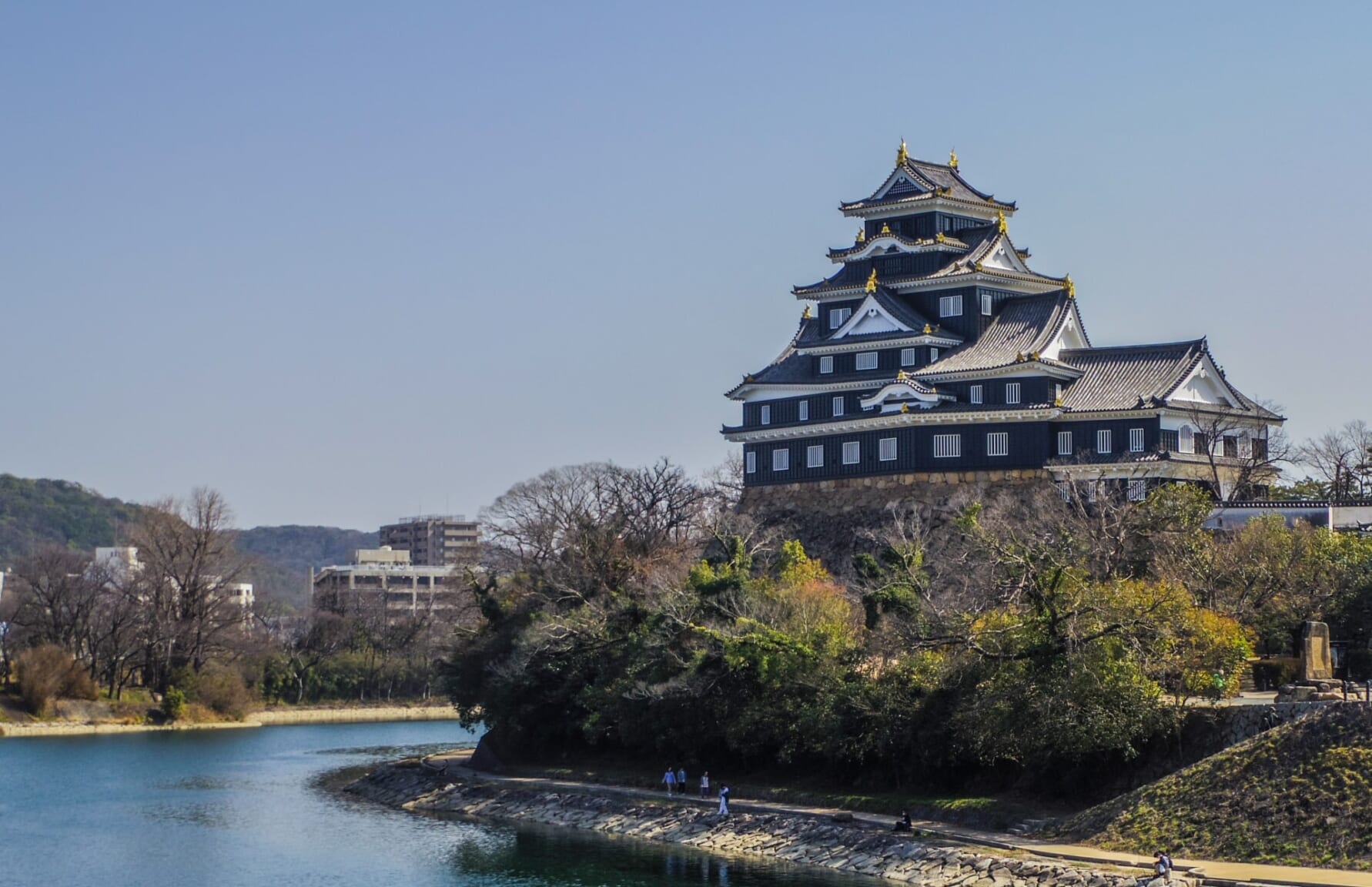
Okayama, the capital of Okayama Prefecture, is an important transportation hub with a rich history as a former castle town. Located just 26 minutes from Himeji Station on the Tokaido Sanyo Shinkansen, this is a city that calls for a slower pace, enjoying the sights. Make sure to try Barazushi, one of the most famous local specialties!
<<Book your Okayama-Hiroshima-Yamaguchi Area Pass here!>>
Okayama must-see list:
- Korakuen Garden: Begin your day at Korakuen, one of Japan’s Three Great Gardens. This expansive landscape garden features spacious lawns, ponds, and teahouses, providing a tranquil retreat.
- Okayama Castle: Adjacent to Korakuen, visit Okayama Castle, known as “Crow Castle” for its black exterior. Explore the reconstructed main keep and enjoy panoramic views of the city.
- Kibitsu Shrine: In the afternoon, consider visiting Kibitsu Shrine, renowned for its unique architectural style and the long, covered corridor leading to the main hall.
Day 18: Kurashiki, A Day Trip Full of Historical Charm
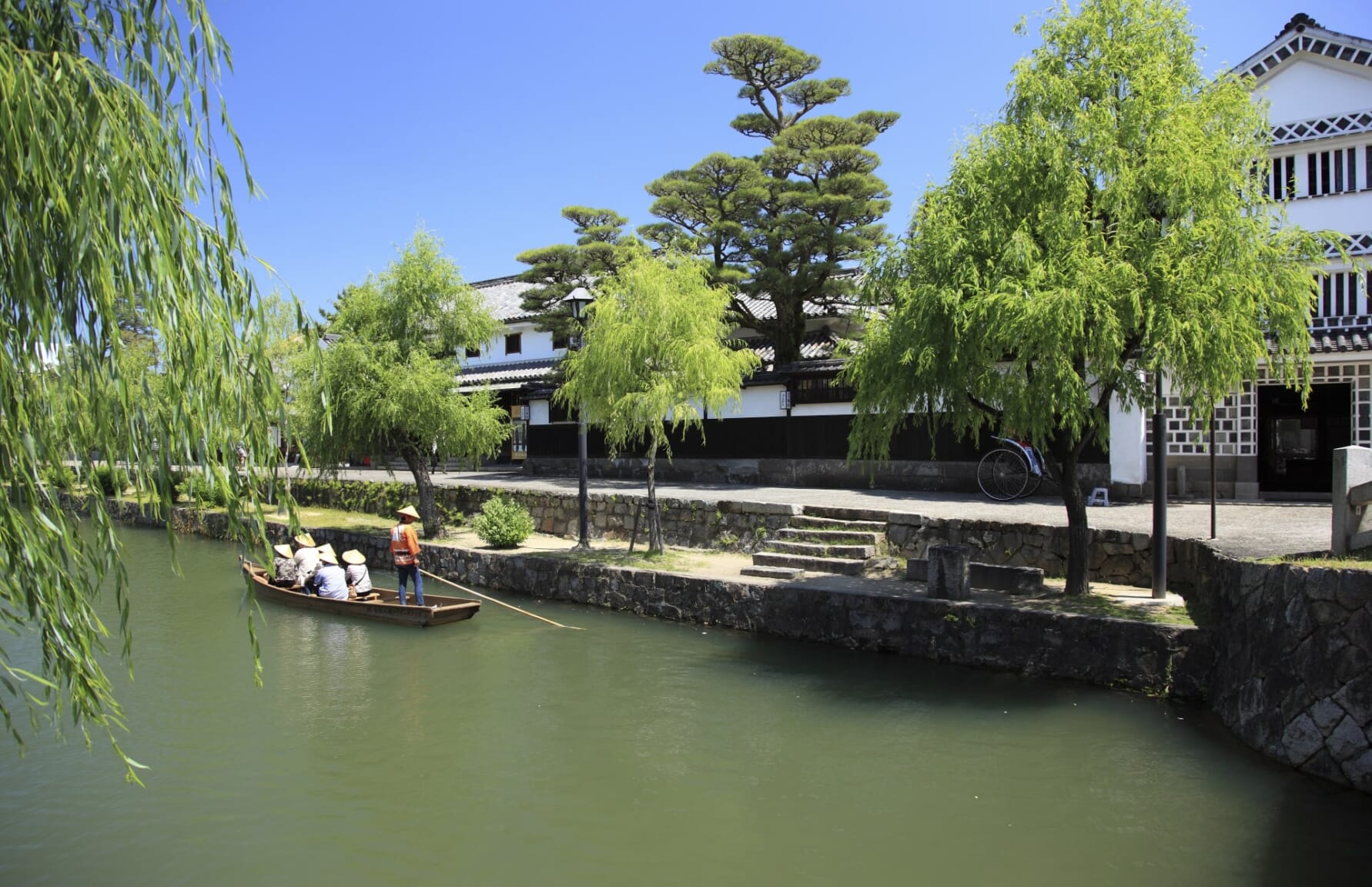
Just a few train stops away from Okayama Station and perfect for a day trip, Kurashiki’s Bikan Historical Quarter enchants with its preserved Edo-period architecture and picturesque canals, a beautifully preserved sample of Japan’s merchant past. Be sure to explore the area’s boutiques and cafés, where you can shop for local crafts and savor regional delicacies.
- Kurashiki Bikan Historical Quarter: Stroll through this well-preserved merchant district, characterized by white-walled buildings, willow-lined canals, and traditional storehouses.
- Ohara Museum of Art: Visit Japan’s first museum of Western art, housing works by renowned artists such as El Greco, Monet, and Picasso.
- Traditional Boat Tour: Experience a guided boat ride along the Kurashiki Canal, offering a unique perspective of the historical quarter.
Day 19: Day Trip to Shodoshima, Scenic Island Escape from Okayama
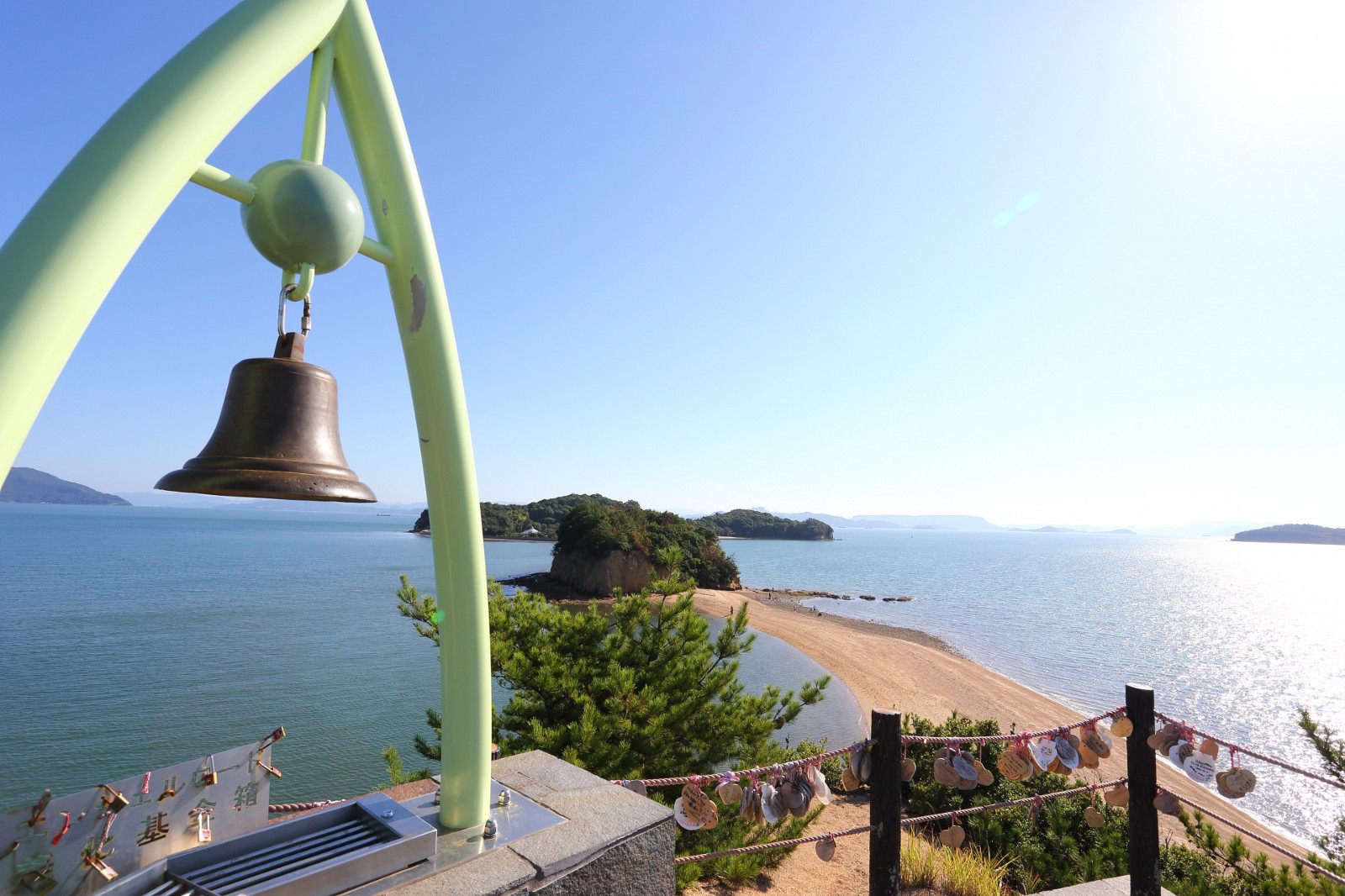
Shodoshima, nestled in the Seto Inland Sea, is renowned for its Mediterranean ambiance, olive cultivation, and captivating natural landscapes. The island’s serene beaches, terraced fields, and unique attractions create one of the most perfect retreats from mainland Japan. Consider renting a bicycle or car to explore the island’s attractions at your own pace.
Getting There from Okayama
- From Okayama Station, take a Ryobi Bus to Shin-Okayama Port (approximately 35 minutes).
- From Shin-Okayama Port, board a ferry to Tonosho Port on Shodoshima (approximately 70 minutes).
- A combined bus and ferry discount ticket is available for 1,400 yen at the Okayama Bus Terminal or Tonosho Port. It’s advisable to check the latest schedules in advance.
Highlights on Shodoshima:
- Angel Road: A 500-meter sandbar that emerges twice daily during low tide, connecting Shodoshima to nearby islets. Legend says that couples who cross it hand-in-hand will have their wishes granted. The site is a short 10-minute bus ride from Tonosho Port.
- Shodoshima Olive Park: A hillside park featuring over 2,000 olive trees, herb gardens, and a replica of a Greek windmill, reflecting the island’s status as Japan’s olive cultivation pioneer.
- Kankakei Gorge: A dramatic ravine offering panoramic views, especially stunning during autumn foliage.
- Soy Sauce Villages: Explore traditional soy sauce breweries, some operating for centuries, showcasing the island’s rich culinary heritage.
Day 20: Onomichi, A Leisurely Stop Between Sea and Hills
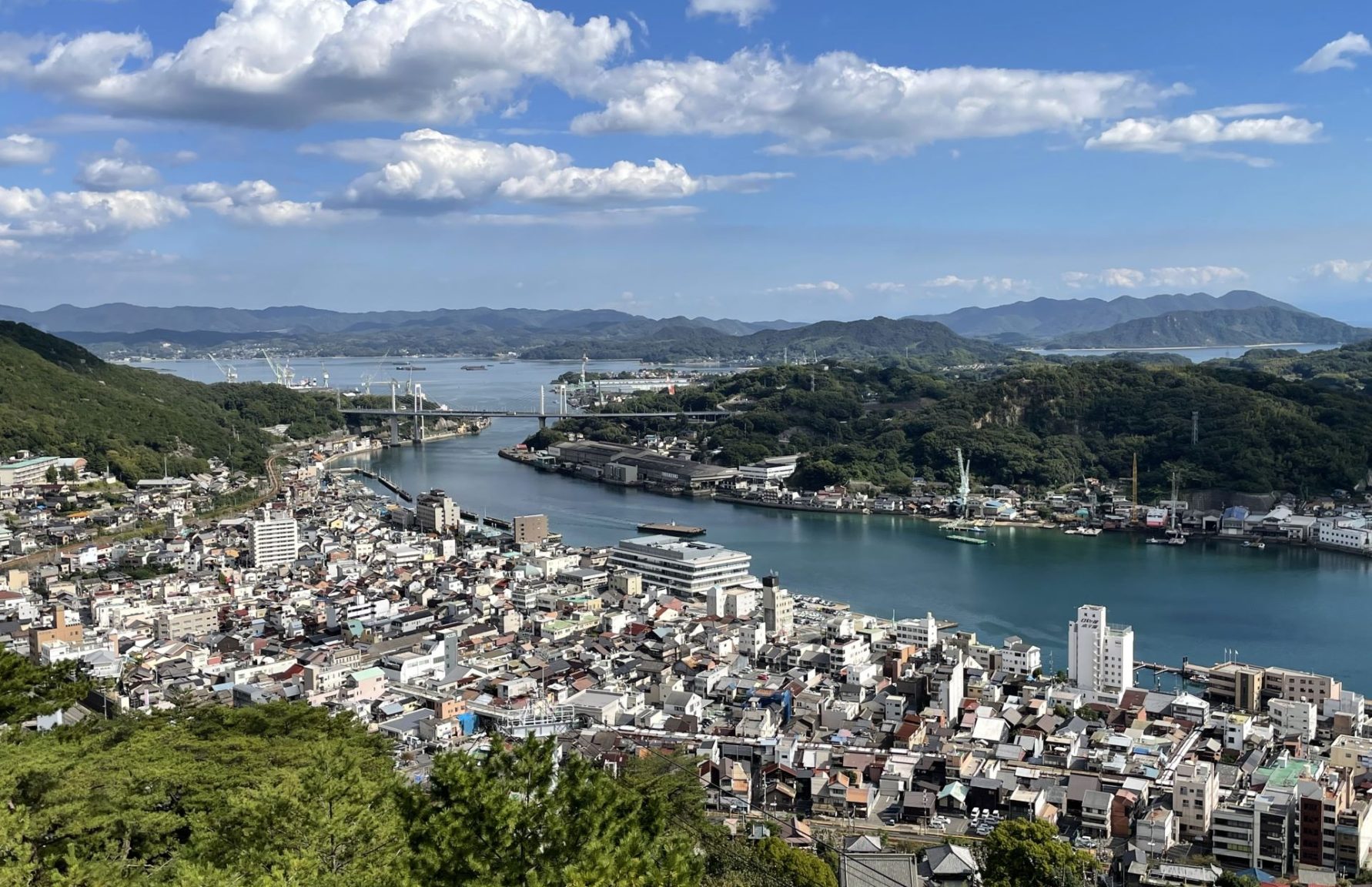
With its hillside temples, retro charm, and views across the Seto Inland Sea, Onomichi offers a slower pace and a refreshing change of scenery. It’s located about a 1hr30min ride away from Okayama. Sandwiched between steep green slopes and a narrow coastal strip, this port town is the kind of place where you let the day unfold gradually, one coffee shop, ropeway ride, or scenic overlook at a time. Make sure to try Onomichi Ramen, the town’s signature dish!
Things you shouldn’t miss in Onomichi:
- Onomichi Hondori Shopping Arcade: A covered shopping street that runs parallel to the coastline and houses everything from vintage clothing and bakeries to nostalgic kissaten and second-hand bookstores. Ideal for a slow stroll and picking up quirky souvenirs.
- Senkoji Ropeway and Senkoji Temple: Take the short ride up the mountain for sweeping views of the Seto Inland Sea. The ropeway drops you near Senkoji Park, where Senkoji Temple—dating back to the 9th century—perches dramatically on the cliffs. From here, you get one of the best panoramas in western Japan.
- Onomichi City Museum of Art: Designed by Tadao Ando, this small but elegant art museum sits within Senkoji Park. Exhibits focus on both Japanese and international artists, and the architecture alone makes the visit worthwhile.
- Seaside Walk & Onomichi Museum on the Beach: Once you return to the lower town, follow the waterfront promenade past cafes and moored boats toward the Museum on the Beach, a creative space integrating art and maritime heritage in a casual, open-air setting.
Day 21: Shimanami Kaido from Onomichi, A Scenic Ride Across the Seto Inland Sea

The Shimanami Kaido is a 60-kilometer cycling route that connects Japan’s main island of Honshu to Shikoku, traversing six small islands in the Seto Inland Sea. Renowned for its breathtaking sea views, well-maintained paths, and iconic suspension bridges, the route offers cyclists a unique blend of natural beauty and cultural experiences. This route generally requires two days to traverse in its entirety so this time, we propose just a small section for 1 day to enjoy the experience and take in the sights.
Getting Started from Onomichi
- Begin your journey at the Onomichi Port Bicycle Rental Terminal, conveniently located near JR Onomichi Station. This public rental facility offers a variety of bicycles, including standard and electric-assist models. Bicycles must be returned to the same terminal by 19:00 on the day of rental.
Suggested Cycling Route
Given the time constraints, a partial ride along the Shimanami Kaido is ideal. Here’s a recommended itinerary:
- Onomichi to Mukaishima: Take a short ferry ride from Onomichi to Mukaishima Island.
- Mukaishima to Innoshima: Cycle across the Innoshima Bridge, enjoying panoramic views of the Seto Inland Sea.
- Innoshima to Ikuchijima: Continue to Ikuchijima Island, where you can explore local attractions or simply relax by the coast.
After reaching your chosen turnaround point, retrace your route back to Onomichi, ensuring you return your bicycle by the designated time.
Day 22: Hiroshima, Reflecting on History and Resilience
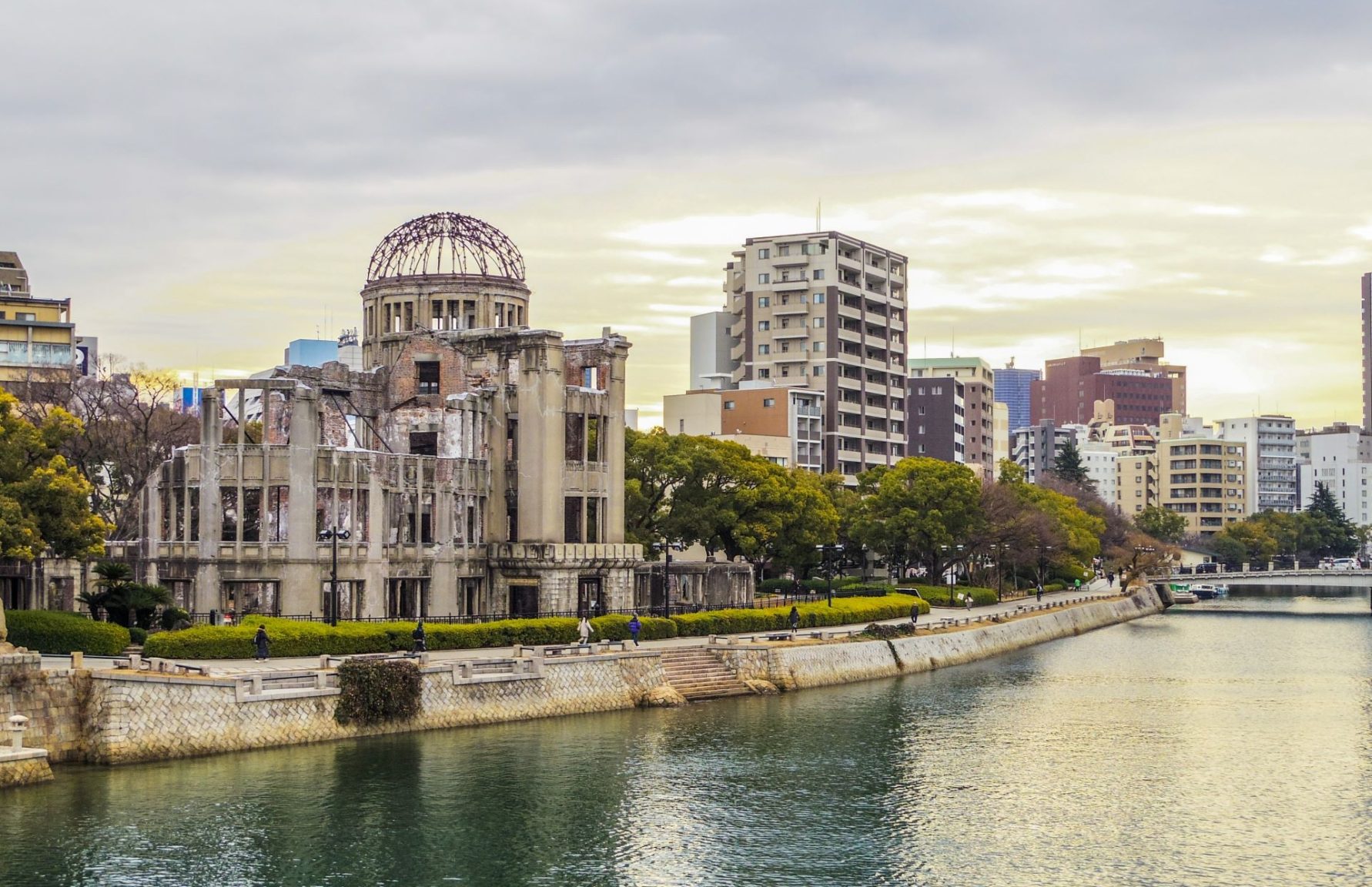
From Onomichi Station, the quickest route is to take the Sanyo Line to Fukuyaa Station and then take the Sanyo Shinkansen to Hiroshima Station for an approximately 1h trip overall. Hiroshima is the principal city of the Chugoku Region, historically significant for its resilience and peace initiatives following World War II. But beyond its tragic history, it’s a charming and fun port city also renowned for its excellent gastronomy. Main highlights include oysters and Hiroshima-style okonomiyaki.
More itinerary ideas in Hiroshima:
Hiroshima Itinerary for 3 Days
- Hiroshima Peace Memorial Park and Museum: Begin your day at the Hiroshima Peace Memorial Park, a solemn space dedicated to the victims of the atomic bombing in 1945. The park encompasses several monuments, including the Atomic Bomb Dome and the Children’s Peace Monument. The Hiroshima Peace Memorial Museum provides detailed exhibits about the bombing and its aftermath. It’s advisable to allocate a few hours for this visit to fully absorb the experience.
- Hiroshima Castle: After the Peace Memorial Park, consider visiting Hiroshima Castle, a reconstruction of the original castle destroyed in the bombing. The castle grounds offer a glimpse into Hiroshima’s feudal history and provide panoramic views of the city from the main keep.
- Okonomimura: In the evening, explore Okonomimura, a multi-story food complex dedicated to Hiroshima’s famous dish, okonomiyaki. Here, you can savor this savory pancake cooked in various styles by different vendors, offering a delightful culinary experience.
Day 23: Miyajima, Sacred Island Exploration
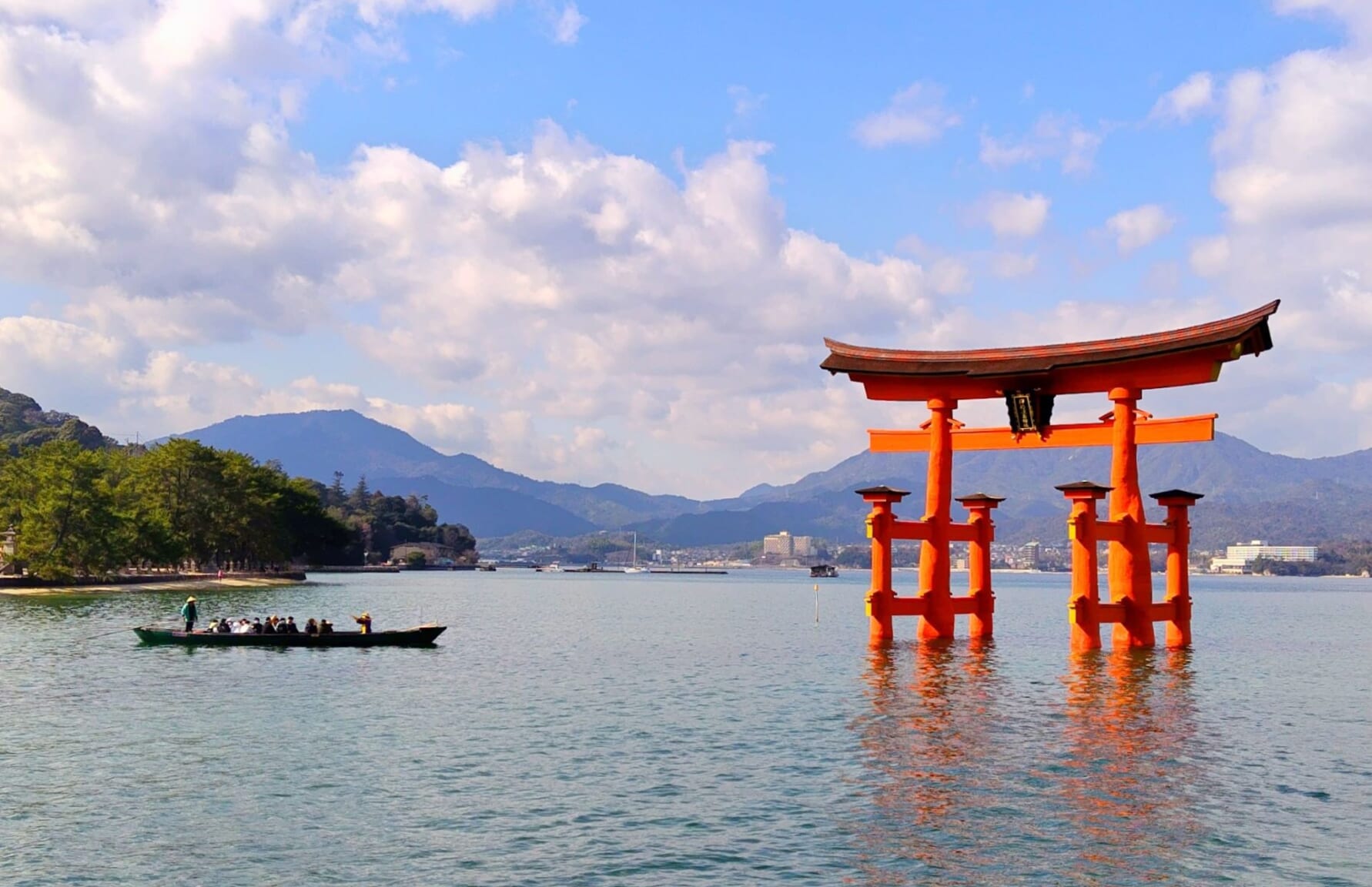
A visit to Hiroshima is not complete if you don’t stop by Miyajima island. Start early and take the JR Sanyo Line from Hiroshima Station to Miyajimaguchi Station (approximately 30 minutes). From there, board the ferry to Miyajima Island, a short 10-minute ride. Alternatively, near the Atomic Bomb Dome you can also take another ferry cruise to Miyajima Island that takes about 45 minutes.
Miyajima Island is mostly famed for its “floating” torii gate and natural beauty, but there’s a lot more to explore to make the most of your day! While on Miyajima, try local specialties such as grilled oysters and momiji manju, a maple leaf-shaped cake filled with sweet fillings. These treats are widely available along the Omotesando shopping street.
- Itsukushima Shrine: Upon arrival, visit the iconic Itsukushima Shrine, renowned for its “floating” torii gate that appears to hover over the water during high tide. The shrine’s unique architecture and serene setting make it a highlight of the island.
- Daishoin Temple: Don’t miss one of the most unique and picturesque Buddhist temples around the area, where hundreds of jizo statues, looking after pilgrims, are located along the way.
- Mount Misen: For panoramic views, consider ascending Mount Misen, the highest peak on the island. You can hike one of the trails or take the Miyajima Ropeway partway up, followed by a short hike to the summit. The journey offers scenic vistas and encounters with local wildlife.
Part 4: Venturing Into Kyushu
Days 24–25: Fukuoka, Gateway to Kyushu
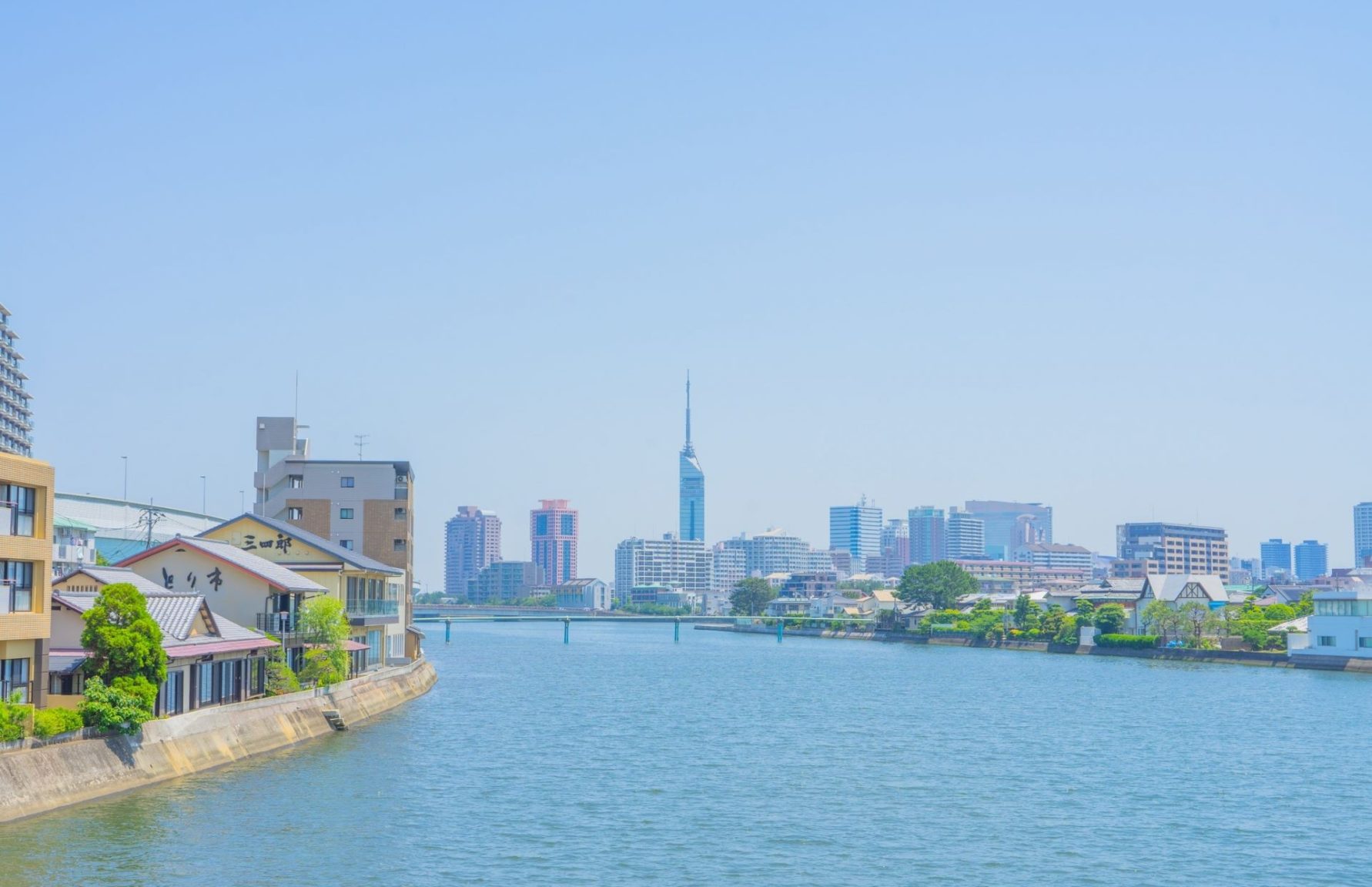
As Kyushu’s largest city, Fukuoka combines coastal openness with a fast-growing urban core. It’s known for its accessible layout, laid-back energy, and a food culture that punches well above its weight, most famously in the form of Hakata ramen. From Hiroshima, you can reach Hakata Station in about 1h by Shinkansen. With strong historical ties to the Asian mainland and a steady stream of domestic innovation, Fukuoka feels both rooted and forward-moving.
- Ohori Park: A spacious public park featuring a large pond, walking paths, and a traditional Japanese garden, perfect for leisurely strolls.
- Kushida Shrine: One of Fukuoka’s oldest Shinto shrines, known for its role in the Hakata Gion Yamakasa festival.
- Yatai Food Stalls: Experience Fukuoka’s famous open-air food stalls offering local specialties like Hakata ramen and yakitori.
- Fukuoka Tower: The most prominent contemporary symbol of Fukuoka, a great place to get panoramic views of the city.
- (Optional) Half day trip to Itoshima: A lovely seaside city with a laid-back ambiance and paradisiac beaches.
Day 26: Day Trip to Kitakyushu, Industrial Heritage and Scenic Views
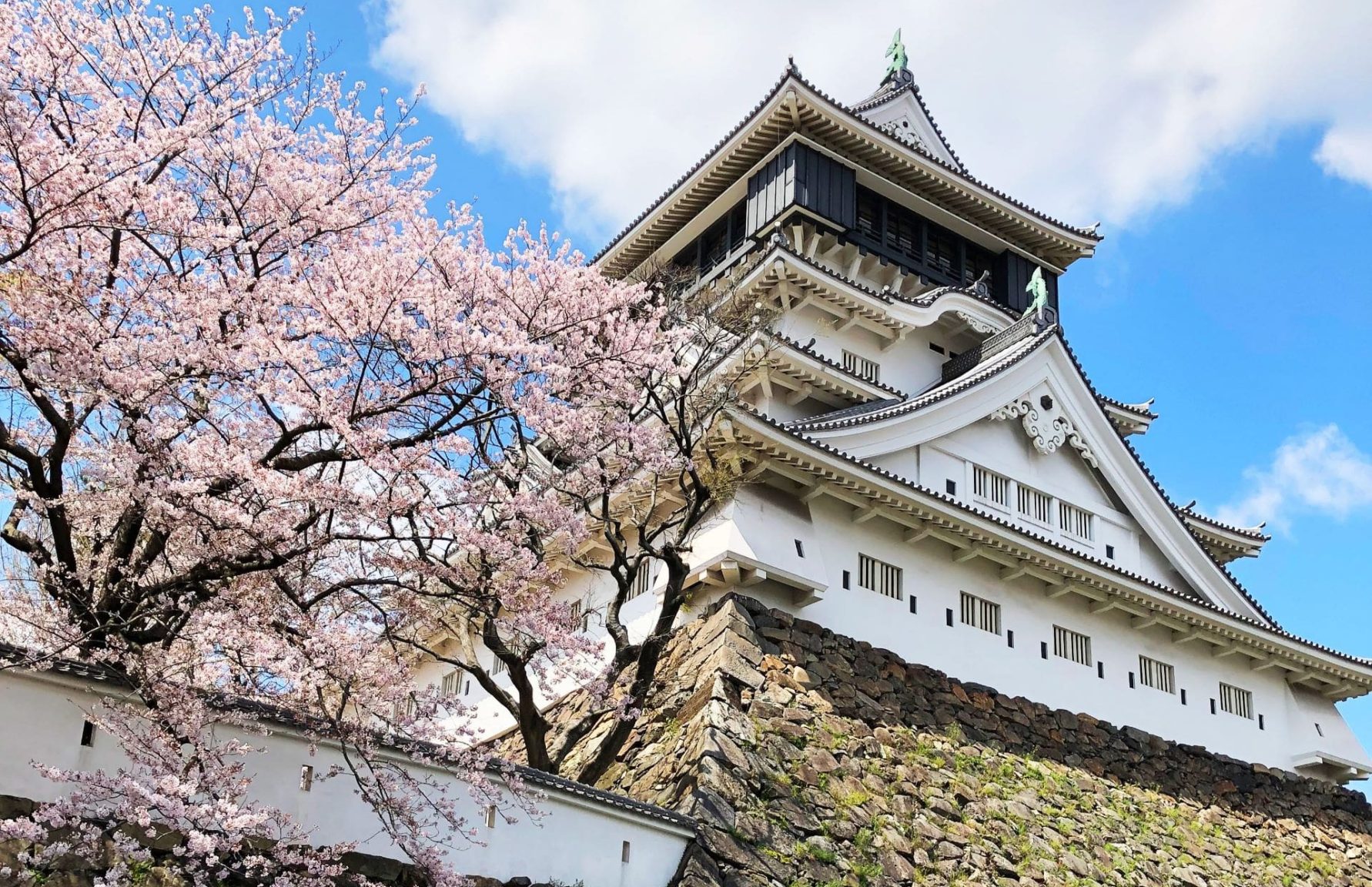
Located northeast of Fukuoka, Kitakyushu is just a short 15-min Shinkansen ride from Hakata Station. Once a major industrial powerhouse, Kitakyushu today is a city that has quietly redefined itself. It’s a place where steel heritage meets green tech, and where engineering museums, historic districts, and coastal walks coexist. Its compact center and efficient transit make it an easy day trip, offering a different take on urban Kyushu, less polished, more grounded, and full of character.
- Kokura Castle: A reconstructed 17th-century castle surrounded by gardens and a moat, offering insights into the region’s history.
- TOTO Museum: Explore the evolution of modern plumbing and design at this unique museum dedicated to the TOTO brand.
- Mojiko Retro District: A waterfront area featuring preserved Western-style buildings, museums, and cafes, reflecting the city’s trading past. Ideal for leisurely walks and photography, especially during sunset.
- Kawachi Wisteria Garden: Famous for its stunning wisteria tunnels, best visited during the blooming season in late April to early May.
Day 27: Day Trip to Kumamoto, Castles and Gardens
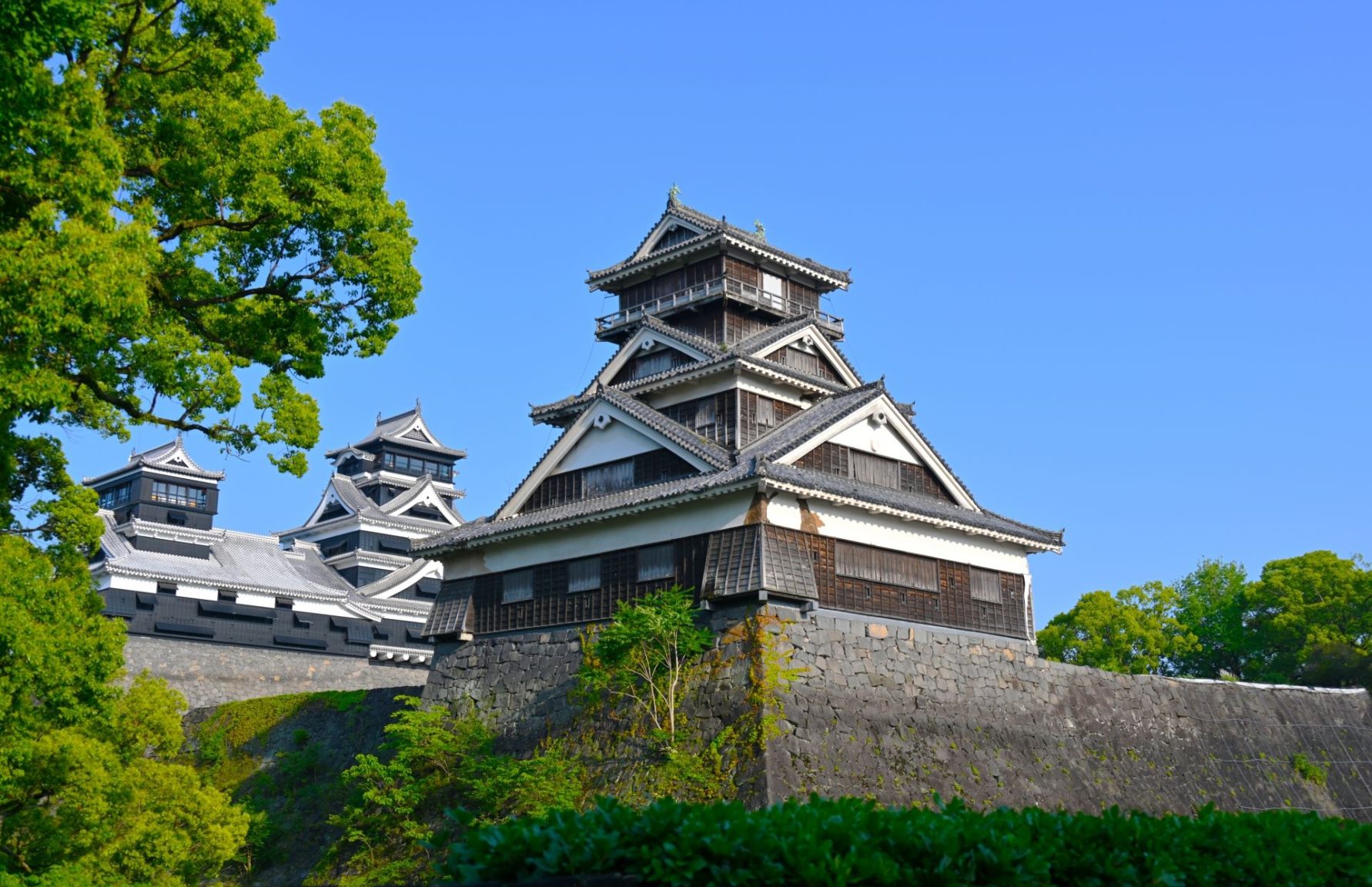
Kumamoto, located in central Kyushu, is renowned for its impressive castle, serene gardens, and rich samurai history. The city’s blend of cultural landmarks and natural beauty provides a comprehensive experience for visitors. It’s located about 40-min Shinkansen ride from Hakata Station, a comfortable distance for a day trip from Fukuoka.
Highlights in Kumamoto
- Kumamoto Castle: One of Japan’s most iconic castles, known for its imposing architecture and historical significance.
- Suizenji Jojuen Garden: A traditional Japanese landscape garden replicating the 53 post stations of the Tokaido road.
- Sakuranobaba Johsaien: A cultural complex near the castle offering local crafts, food, and historical exhibits.
Days 28–29: Nagasaki, Layers of Culture and History
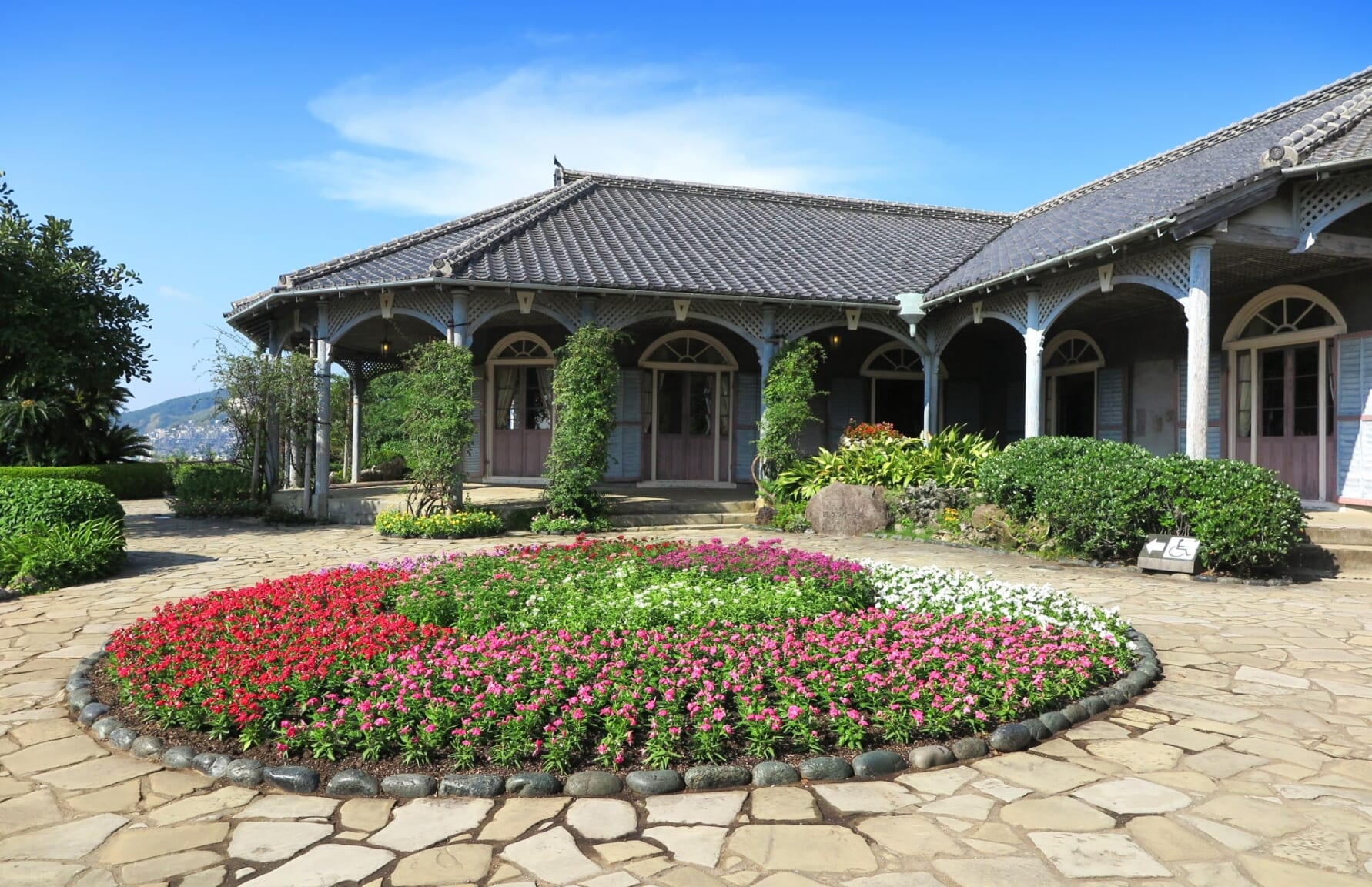
Nagasaki stands apart for its deep international ties and complex past. Once Japan’s only open window to the West, the city reflects centuries of cultural exchange and Christian tradition alongside the profound impact of wartime devastation. From Hakata Station, take a limited express and then connect with the Nishi Kyushu Shinkansen to reach Nagasaki in about 1h30min. Today, Nagasaki is a place to explore countless histories, coastal landscapes, and a distinct local character shaped by cultural openness.
Some Nagasaki essentials:
- Nagasaki Peace Park: A solemn memorial dedicated to the victims of the atomic bombing, featuring monuments and the Peace Statue.
- Atomic Bomb Museum: Provides a detailed account of the events surrounding the bombing and its aftermath.
- Glover Garden: An open-air museum showcasing Western-style residences of former foreign residents, set on a hillside with harbor views.
- Mount Inasa: Offers panoramic night views of Nagasaki, considered among the best in Japan.
Day 30: Return to Fukuoka, Departure, and Final Explorations
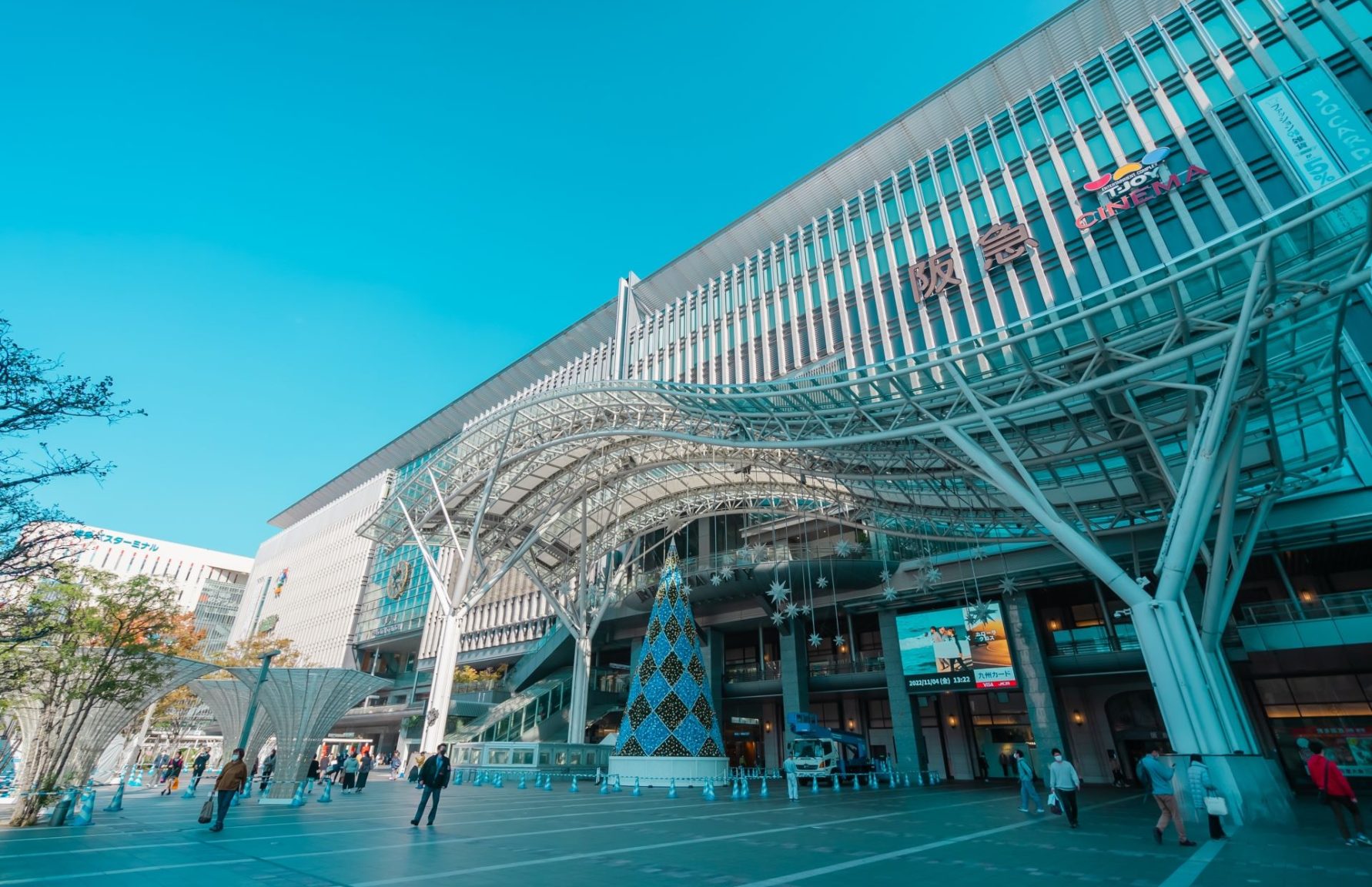
As your month-long journey across Japan concludes, Day 30 offers a final opportunity to savor Fukuoka’s charm before your departure. Whether you have a few hours or most of the day, the city’s efficient transportation and proximity to the airport make it easy to enjoy a relaxed farewell.
Morning Suggestions
- Canal City Hakata: A short subway ride from Hakata Station, this expansive shopping and entertainment complex offers a variety of shops, restaurants, and a striking canal running through its center.
- Kushida Shrine: Located near Canal City, this historic Shinto shrine is known for its role in the Hakata Gion Yamakasa festival and offers a peaceful retreat amidst the urban setting.
- Local Cuisine: Indulge in Fukuoka’s culinary delights one last time. Consider trying Hakata ramen at a local yatai (street food stall) or savoring fresh seafood at a nearby market.
Best Time to Visit Japan for a 1 Month Trip
If you have read a bit about traveling in Japan, it will come as no surprise that Spring and Autumn are the most sought-after choices to visit the country. Admittedly, sakura season in Spring will always take the cake, because the gorgeous cherry blossom experience all over the country is something that you will probably not find anywhere else in the world. The explosion of warm hues that comes with mid-late Autumn is a worthy contender as well. It’s unsurprising, then, that these are the most popular seasons in Japan. But they come with their own set of drawbacks as well. Crowds are to be expected in all the popular spots, and prices are higher for most accommodations, while booking spots for certain attractions becomes a challenge unless you plan well in advance.
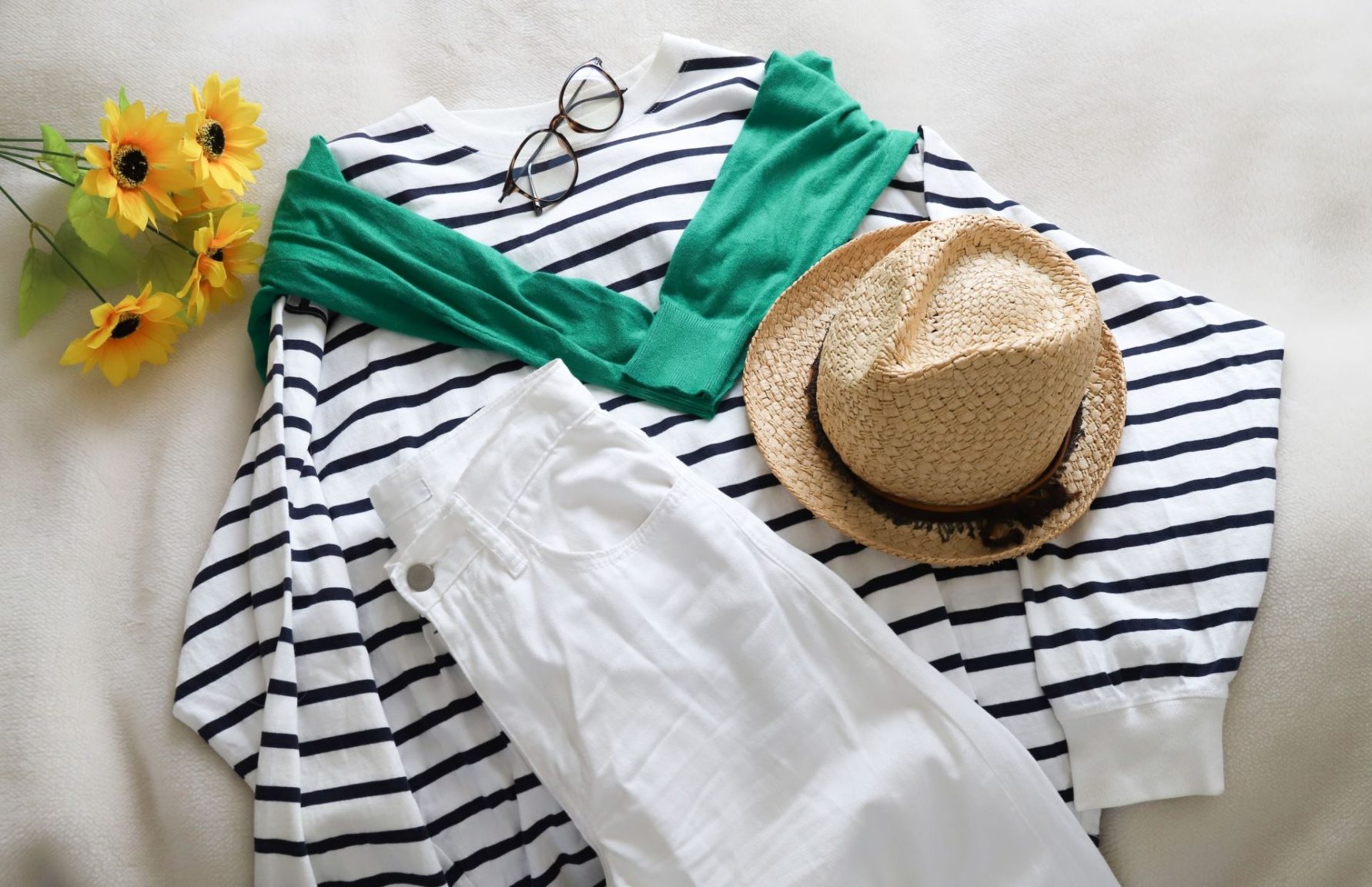
To make the most of mild weather while avoiding the crowds for a month (and saving a few bucks while at it), late spring between May-June (when sakura season and the Golden Week craze is over) or late Summer/early Autumn (between September and October) have a nice enough weather without overdoing it. However, for those of you who may only have a chance during Summer holidays or Winter break, there are plenty of interesting things to see (as long as you plan your wardrobe accordingly and take necessary precautions), such as Summer Festivals or Winter Illumination events.
If you ask me, every season has its charms and Japan is definitely a worthy destination year-round. Here’s a quick overview of what each season has to offer:
- Spring (March–May): Mild temperatures and cherry blossoms in full bloom from late March to mid‑April. Late April brings Golden Week, which is the busiest season for domestic travelers, so expect crowds but also many vibrant festivals.
- Summer (June–August): Early summer’s rainy season gives way to hot, humid weather, but also to the blooming season of Hydrangeas. July and August host some of Japan’s biggest matsuri (think Gion in Kyoto or Nebuta in Aomori) and spectacular fireworks. Summer is also the perfect moment to climb Mt. Fuji.
- Autumn (September–November): Temperatures start to cool in September, the month of moon-viewing festivals, and foliage peaks from mid‑October through November, painting mountainsides in reds and golds. It’s also harvest time for local specialties like matsutake mushrooms.
- Winter (December–February): Crisp air and clear skies make it perfect to get the best ever photos of Mt. Fuji, or for skiing in Hokkaido or carving out time for Japan’s famous illuminations and New Year temple visits.
For a deeper dive into weather patterns, festival calendars, and region‑by‑region advice, check out our full guide on When Is the Best Time to Visit Japan?
How Much Does a 1‑Month Trip to Japan Cost?
On a mid‑range budget, a 30‑day journey through Japan today runs roughly ¥700,000–¥800,000 (about $5,200–$6,000), excluding international flights. This estimate reflects current prices, which have seen an increase compared to recent years due to inflation and the growth of tourism demand. It covers comfortable hotels, a 21‑day Japan Rail Pass plus local travel, three meals a day at casual restaurants, standard attraction fees, and incidental expenses.
For the budget-conscious, think of this as a sort of baseline that can be adapted (taking advantage of accommodation breakfast or local transportation passes, etc), but for the average reader, I’d rather err on the generous side than fall short. Naturally, nicer accommodations or restaurant choices will impact the overall outcome. In any case, here’s an approximate breakdown of possible expenses:
Accommodation
Mid‑range business hotels in Japan typically cost between ¥7,000 and ¥12,000 per night, though dynamic pricing has occasionally pushed rates higher, especially in cities like Tokyo and Kyoto. Based on a national average of roughly $102 (¥14,000) per night for a standard room, 30 nights will total about ¥420,000.
Transportation
A 21‑day Ordinary Japan Rail Pass costs ¥100,000, granting unlimited JR train travel, including Shinkansen, across the country. For the remaining nine days of local transit (metro, buses, regional trains), budget about ¥3,600 per day, totaling ¥32,400. Combined, transport runs approximately ¥132,400.
Food
Most travelers find that three meals per day in casual to mid‑range establishments average ¥1,000–¥2,000 per meal, or ¥3,000–¥6,000 per day for moderate dining. A conservative mid‑range estimate of ¥3,450 daily (about $23) leads to ¥103,500 over a month.
Sightseeing
Entrance fees for temples, gardens, museums, and similar attractions generally range from ¥300 to ¥1,000 each, averaging about ¥500 per visit. Assuming 20 paid visits during your trip, budget roughly ¥10,000 total.
Miscellaneous
Allow ¥300 per day for small extras—snacks, drink refills, local SIM cards, coin lockers—adding up to around ¥9,000 over 30 days.
Total Estimated Cost:
- Accommodation: ¥420,000
- Transportation: ¥132,400
- Food: ¥103,500
- Sightseeing: ¥10,000
- Miscellaneous: ¥9,000
Grand Total ≈ ¥674,900 (approximately $5,200) per person.
As previously said, actual spending may vary depending on lodging choices (capsule hostels vs. ryokan), dining preferences (street food vs. mid-range vs. gourmet), and additional excursions.
As you can see, there’s so much to see and do that even a month may fall short. If this is your second time, you also have the option to skip all the famous spots altogether and embark in a strictly alternative itinerary. However, you may also see that the usual sights will also have something new to be discovered about them. Hopefully this guide inspires you to keep exploring!
For more itinerary ideas, check the articles below!
Written by
Photographer, journalist, and avid urban cyclist, making sense of Japan since 2017. I was born in Caracas and lived for 14 years in Barcelona before moving to Tokyo. Currently working towards my goal of visiting every prefecture in Japan, I hope to share with readers the everlasting joy of discovery and the neverending urge to keep exploring.





